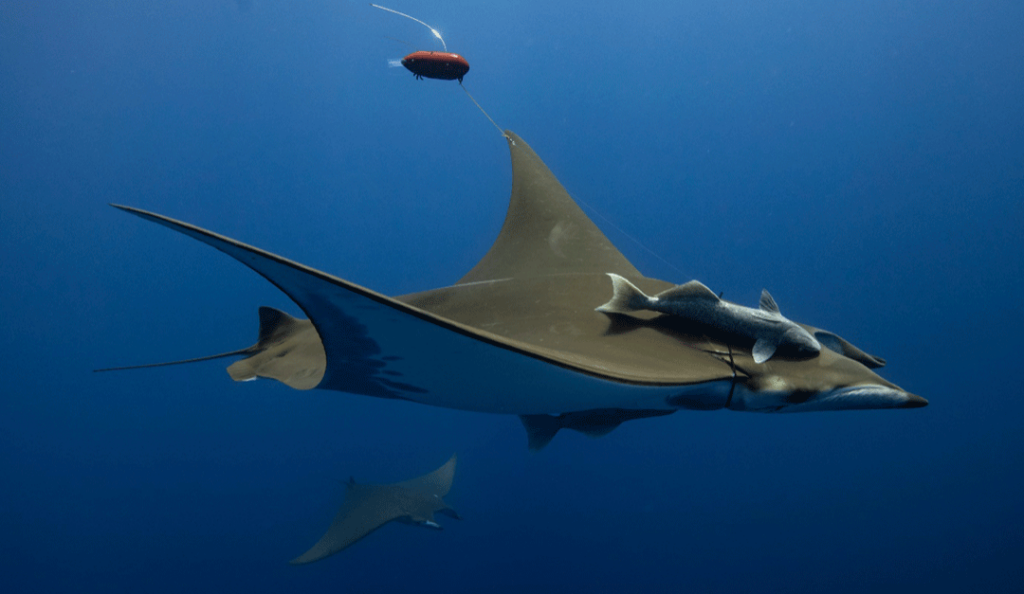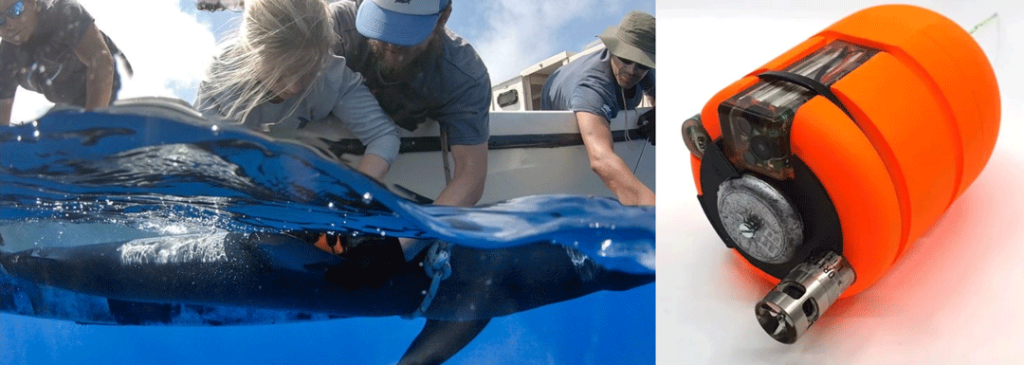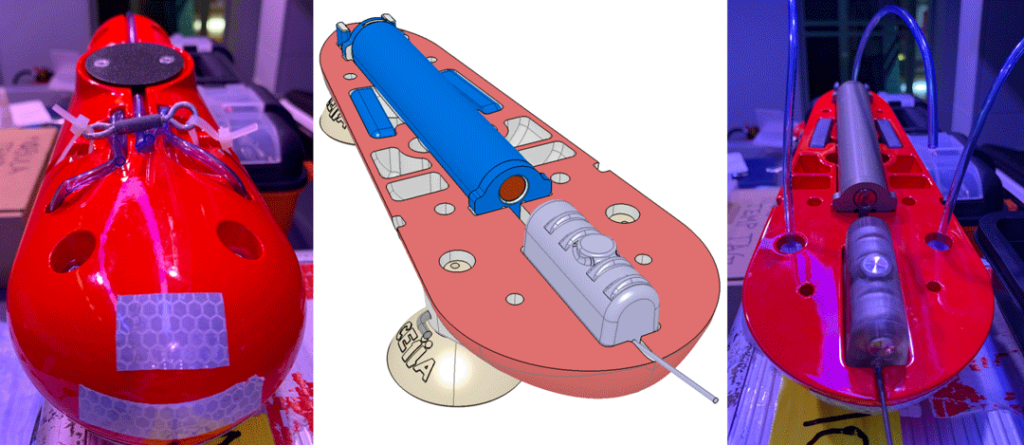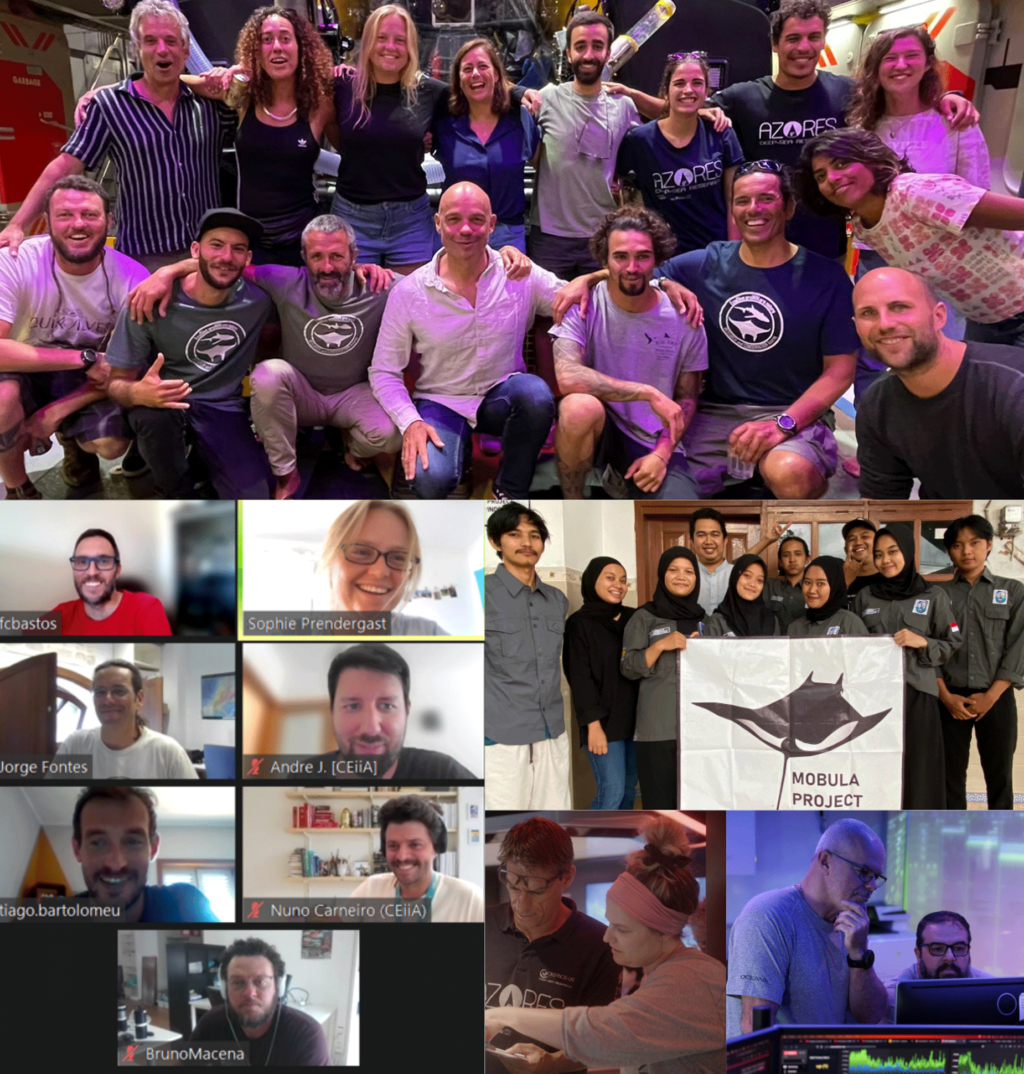The Devil is in the Details
Developing a novel multisensory biologging tag to investigate the thermal envelope of sicklefin devil rays, Mobula tarapacana, in the Azores Archipelago
The ability to assess problems creatively, the desire to push the boundaries of our current understanding, and to develop innovative ways to answer complex questions is what makes scientific research so exciting. This ability to think “outside the box” is what piqued my interest in working with the EcoDive team at the University of the Azores – Okeanos.
At present there are many options to purchase off-the-shelf sensors that address questions surrounding the movements of migratory marine organisms and investigate the drivers of the observed behaviors. However, many commercially available sensors function individually and are not optimized for non-invasive deployment options. The EcoDive team has worked tirelessly to develop biologging tags to address complex research questions, while also prioritizing a non-invasive deployment approach namely the iPilot and GPilot tags. The lab is continuously pushing the limits of creativity to investigate some of the fundamental ecology questions surrounding the distribution patterns of migratory marine species.

Sicklefin devilray, Mobula tarapacanna, tagged with the iPilot biologging tag. Image by Cory Fault.
My PhD research focuses specifically on investigating the thermal tolerance of blue sharks, Prionace glauca, and sicklefin devil rays, Mobula tarapacana, to inform management and conservation measures in a warming ocean. To address this question, we need to simultaneously collect acceleration, temperature (both internal and external), and depth data, which requires developing a housing to carry multiple sensors. My supervisors Dr. Nuno Queiroz (University of Porto) and Dr. Jorge Fontes (University of the Azores) have previously developed a biologging package capable of recording these parameters for sharks, the MultiS.

MultiS Biologging Package and Deployment. The first image, taken by Paige Wernli, shows Sophie Prendergast deploying the MultiS on a large male blue shark with assistance from Dr. Jorge Fontes, Dr. Bruno Macena, and Sisenando Mateos. The second image was provided by Electric Blue and shows their MultiS biologging package.
Now the challenge was designing a similar package to be deployed on free-swimming devil rays. The design process was extremely daunting. To create a package that met all our requirements involved a significant amount of research, creativity, and attention to detail. For example, sickle fin devil rays have a thick mucus layer covering their skin, making it difficult to develop a tag that stays close to the body, especially since the tag needs to be deployed on free-swimming individuals. To address this, we drew inspiration from Formula 1 cars which are built to increase the amount of downforce generated by air as it passes over the car. The internal temperature sensor was incorporated in such a way that it acts as an anchor, to keep the tag from sliding, while also collecting the animals’ internal temperature.

First look at the novel Mobula Temperature Tag. Image 1 shows the tag fully assembled; Image 2 is a CAD image of the tag provided by CEiiA; Image 3 shows the tag open with the LITE device and SPOT tag in view.
Many other features of the tag were also inspired by unlikely sources. The decision to attach the tag with suction cups was inspired by biologging tags, previously designed by our collaborators at CEiiA engineering center, to be deployed on cetaceans. To improve the effectiveness of the suction cups we referred to information about geckos, whose unique footpads allow them to securely attach to wet and slippery surfaces. However, we wouldn’t have been able to complete this project without the help and guidance of our many collaborators; The Mobula Project Indonesia (who provided instrumental data surrounding M. tarapcana muscle structure and thickness), CEiiA (whose expert team of engineers allowed us to turn our dream into a reality), the technical team of OceanX (whose support and guidance was instrumental in carrying out the first test deployments), and of course the entire EcoDive Team at Okeanos-UAc. We are so grateful for the support we have received throughout this process.

EcoDive Team and Mobula Temperature Tag Collaborators at CEiiA, The Mobula Project Indonesia and OceanX. From left to right: Image of the EcoDive Team and Okeanos-UAc colleagues aboard OceanXplorer, taken by Mario Tadinac; Screengrab of CEiiA and EcoDive tag design team during the final tag development meeting; Image of the Mobula Project Indonesia team who provided important data regarding sicklefin devil ray muscle composition, taken by Mobula Project Indonesia; Image of OceanX Science Coordinator Mattie Rodrigue working with researchers from Okeanos-UAc aboard OceanXplorer, taken by Adam Wolffbrandt; and lastly, an image of the OceanX Science & Information Technology Team, Carlos Fonesca and Constantin Benedic, taken by Mario Tadinac.
As a PhD student, being involved in the entire tag designing process has been a truly exceptional and humbling experience. If someone told me in 2019 that in a few short years I would be working with people from all over the globe to develop a novel biologging package I would have laughed, I wouldn’t have believed them. Of course, we still have a long way to go. After conducting the first deployments we were able to see what works well and what needs to be improved, but that is part of the process. Nothing works perfectly the first time; I would be a little suspicious if it had. But we have made monumental progress this year and I cannot wait to see where it takes us.
